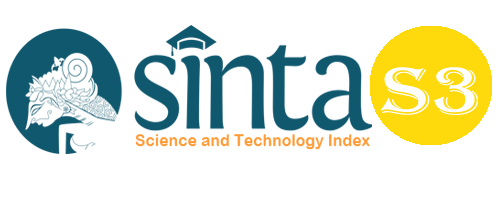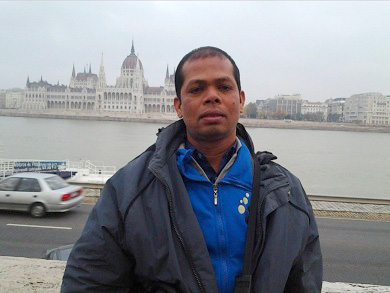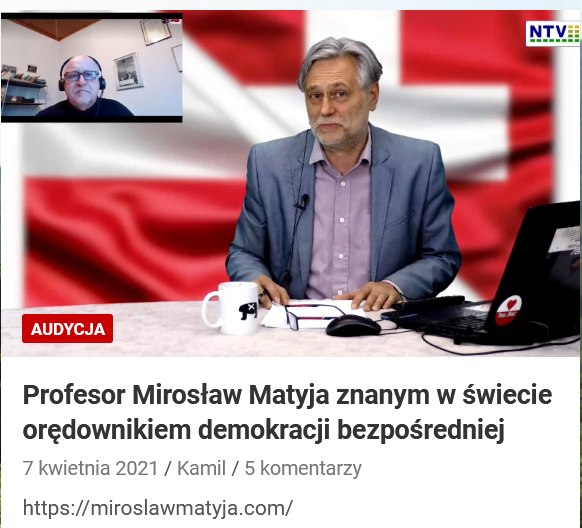Coffee Farm Agrotourism Model as Fluctuating Income Solution and Environmental Uncertainty in Kabupaten Bener Meriah and Aceh Tengah
Abstract
Coffee is a leading commodity and a source of community income where coffee plantations are managed and owned by the community. This study aims to determine the effect of coffee plantation agro-tourism development on the solution of community income fluctuations and environmental uncertainty. This study uses primary data sourced from a questionnaire of as many as 170 respondents conducted by purposive sampling method. This research method uses a causal model survey method using path analysis techniques with Structural Equation Models (SEM). The results of data analysis obtained coefficient and significance values that illustrate that coffee plantation agrotourism has a significant effect on environmental uncertainty with a significant value of 0.000 which means that if coffee plantation agro-tourism is developed, it will be a solution to environmental uncertainty. Furthermore, coffee plantation agro-tourism also significantly affects people's income with a significant coefficient value of 0.000. If coffee plantation agro-tourism is developed, it will solve community income fluctuations. The role of the government has no effect on people's income with a significance value above 0.05 and does not affect environmental uncertainty with a significance value above 0.05. It shows no government influence in the development of coffee plantation agro-tourism. Moderation: The government's role is still fragile, with a negative coefficient value and a significant value greater than 0.05. This means that the government has not played a role in making coffee plantation agro-tourism one of the tourist destinations in Bener and Central Aceh districts. The conclusion is that the development of coffee plantation agro-tourism is a factor that can be used to increase people's income which is currently fluctuating because the coffee harvest influences it. The development of coffee plantation agro-tourism is also a factor that can overcome environmental uncertainty, where farming communities can use coffee fields as gardens that produce coffee fruit and at the same time as agro-tourism that can create new jobs, open up business opportunities and educate visitors about coffee.
Keywords
Full Text:
PDFReferences
Alamsyah Taher. 2009. Metode Penelitian Sosial. Syiah Kuala University Press Kampus Universitas Syiah Kuala. Banda Aceh.
Astuti, N.W.W. 2013. Prospek Pengembangan Agrowisata Sebagai Wisata Alternatif di desa Pelaga. Jurnal Sosial Dan Humaniora. 3(3): 301 –311.
Avenzora R, Teguh F. 2013. Ekowisata dan Pengembangan Pariwisata Berkelanjutan diIndonesia: Potensi, Pembelajaran, dan Kesuksesan. Jakarta (ID): Kementrian Pariwisata dan Ekonomi Kreatif.
Byrne, B. M.,2001. Structural Equation Modeling With AMOS: Basic, Concepts Application, and Programming. Lawrence Erlbaum Associatesw, Inc. United States of America
Chong,V K & Chong, K M.1997. Strategic Choices, Enviromental Uncertainty and SBU Performance: Accounting and Business Research. Vol 7 No 4. Departemen Pertanian.2003 Agro wisata Meningkatkan Pendapatan Petani.Warta Penelitian Dan Pengembangan Pertanian Vol.24 No 1. http //databasedeptan.go.id.agrowisata/.
Ferdinan Augusty.2006. Metode Penelitian Manajemen Pedoman Penelitian Untuk Penulisan Skripsi, Tesis dan Disertasi Ilmu Manajemen. Universitas Diponogoro. Semarang.
Firya akbar. jurnal ilmu pemerintahan issn 2442-5958 E-ISSN 2540-8674
Ghozali, I., 2008. Structural Equation Modeling Dalam Penelitian Manajemen. Edisi Kedua. Semarang: Badan Penerbit Undip.
Goeldner, Ritchie.2006. Tourism: Principles, Practies, Philosophies. Wiley: Hoboken N.
Gronau,W.and R.Kaufmann.2009.Tourism as A Stimulus for sustainable Development in Rural Areas;A Cypriot Perpective, Tourismos An International Multidisiplinary Journal of Tourism, Vol.4(1),pp.83-95,University of Nicosia.
Gunawan, Filician and Budiono, Linda (2005) Pandangan para pelaku bisnis pariwisata (biro perjalanan wisata, hotel, dan guide) mengenai Surabaya sebagai tempat tujuan wisata. Diploma thesis, Petra Christian University.
Hair JF. 2009. A Primer on Partial Least Squares Structural Equation Modeling (PLS-SEM).
I gede arya sanjaya. 2017. Studi Potensi Subak Renon di Denpasar Selatan untuk Pengembangan Agrowisata. E-Jurnal Agroekoteknologi Tropika. Vol. 2, No. 1.
Indah Purnama Sari. Dr. Alamsyah Taher , M.Si. 2017. Pengembangan Agrowisata Kebun Kopi Pada Masyarakat Kampung Jamur Ujung Kecamatan Wih Pesam Kabupaten Bener Meriah. Jurnal Ilmiah Mahasiswa FISIP Unsyiah. Vol.3 No. 1 www.jim.unsyiah.ac.id.
Iqbal Arisa, Mahdi Syahbandir. 2019. Kebijakan Pemerintah Aceh Tengah dalam Pengembangan Sektor Pariwisata. Jurnal Ilmiah Mahasiswa FISIP Unsyiah Volume 4, Nomor 1, Februari 2019 www.jim.unsyiah.ac.id /FISIP
Lopez, E.P and F.J.C. Gracia.2006. Agrotourism,sustainable tourism and Ultraperipheral areas: The Case of Canary Island Journal, Vol.4(1),pp.85-97
Magdalena, S., Suhatman, R. (2020). The Effect of Government Expenditures, Domestic Invesment, Foreign Invesment to the Economic Growth of Primary Sector in Central Kalimantan. Budapest International Research and Critics Institute-Journal (BIRCI-Journal). Volume 3, No 3, Page: 1692-1703.
Mill, Morisson. 2000. The Tourism System. New Jarsley: Prentice Hall International
Milliken, F. J. 1987. Three Types of Perceived Uncertainty about Environment: State, Effect and Response Uncertainty. Academy of Management Review 12, pp. 133-143.
Niwayan Karisnawati. 2018. Potensi dan Strategi Pengembangan Agrowisata Kopi Luwak Teba Sari Balidi Desa Lodtunduh, UBUD, Denpasar.
Oka A. Yoeti. 2008. Perencanaan dan Pengembangan Pariwisata. Balai Pustaka. ISBN 9794083932
Oman Sukirman. 2017. Apakah Anggaran Pemasaran Pariwisata Pemerintah Efektif dalam Meningkatkan Jumlah Kunjungan Wisatawan. Tourism and Hospitality Essentials (THE) Journal, Vol. 7, No. 2, 2017 – 121
P.N.H. Simanjuntak, S.H.,Pokok-Pokok Hukum Ierdata Indonesia, Djambatan, Jakarta, 2008.
Pitana, I Gede dan Gayatri, Putu Gede. 2005. Sosiologi Pariwisata. Yogyakarta: Andi.
Rumengan Jemmy. Metodologi Penelitian. (CV. Sefa Bumi Persada-Aceh, 2020), p. 52.
Sandryas Alief Kurniasanti.2019. Analisis Strategi Pengembangan Agrowisata (Studi Kasus Kampung Petani Buah Jeruk Siam di Kecamatan Bangorejo - Banyuwangi). Journal of Tourism and Creativity. Vol.3 No.2
Shah, M. M., et al. (2020). The Development Impact of PT. Medco E & P Malaka on Economic Aspects in East Aceh Regency. Budapest International Research and Critics Institute-Journal (BIRCI-Journal). Volume 3, No 1, Page: 276-286
Soerjono Soekanto, Sosiologi Sesuatu Pengantar, (Jakarta: Rajawalipres, 2012.)
Spillane J. 1994. Ekonomi Pariwisata: Sejarah dan Prospeknya. Yogyakarta (ID): Kanisius.
Sudjana. 2005. Metode Statiska. Bandung: Tarsito.
Sugiyono. 2011. Metode Penelitian Kuantitatif. Aflabeta. Bandung.
Surya, Yohanes. 2008. Prediksi Ekonofisik/Kompleksitas, Banten: Kandel.
Syamsiar.2007. Model Pengembangan Agrowisata Pedesaan Sebagai Basis Pembangunan Masyarakat (Kajian Agrowisata Di Desa Tanjung Kecamatan Ngaglik Kabupaten Sleman Diy) Vol 4 No 1. https://jurnal.uns.ac.id
Utama, I.G.B.R. 2012. Agrowisata Sebagai Pariwisata Alternatif Indonesia [Internet]. Buku Referensi: Penerbit Deepublish. [diunduh 11 Mei 2021]. Tersedia pada: https://penerbitdeepublish.com/agrowisata
Vendi Yhulia Susanto.2020. Sepanjang 2019, Devisa Sektor Pariwisata Mencapai Rp.280 Triiun. Referensi: https://nasional.kontan.co.id .2020)
Wall, G. 1997. Substainable Tourism Unsusbstainable Development. In S.Wahab Pigram London Raunledge
Yani Alfian. 2019. Peran Pemerintah Desa Dalam Meningkatkan Pelayanan Publik Kepada Masyarakat Di Desa Ciharashas Kabupaten Bandung Barat. Urnal Ilmu Sosial Dan Ilmu Politik Volume 3 No. 1.
Yulistriani. 2009. Strategi Pengembangan Agrowisata Pada Perkebunan Teh Pt Mitra Kerinci Nagari Lubuk Gadang Selatan Kecamatan Sangir Kabupaten Solok Selatan. Skripsi. Fakultas Pertanian Universitas Andalas. Padang.
DOI: https://doi.org/10.33258/birci.v5i1.3875
Article Metrics
Abstract view : 74 timesPDF - 45 times
Refbacks
- There are currently no refbacks.

This work is licensed under a Creative Commons Attribution-ShareAlike 4.0 International License.

This work is licensed under a Creative Commons Attribution-ShareAlike 4.0 International License.

_.gif)

















_.gif)



